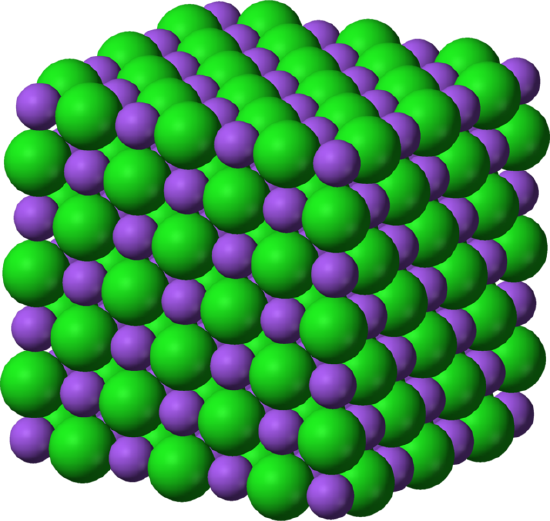
Starting from the rock salt structure, the crystal structure type generated by the removal of all ions of one types is:
A. Simple cubic
B. Body-centered cubic
C. Face-centered cubic
D. End-centered cubic
Answer
491.1k+ views
1 likes
Hint: For solving this question, let’s first start from the structure of the rock salt. In rock salt, the sodium ions occupy octahedral holes and chloride ions have face-centered cubic arrangement. When all the sodium ions are removed from the structure then we are left with face-centered cubic arrangement of the chloride ions.
Complete answer:
First we need to understand what rock salt is?
Rock salt i.e.
We need to remember that the rock salt structure has applications like structure and dynamics of water, crystallization of proteins and conformational behavior of peptides and nucleic acids.
With the help of this figure we can understand the structure of rock salt better.

Here, in this figure, the small purple spheres are representing sodium cations,
And hence Rock salt has FCC structure so the option C is the correct answer.
Note:
In a unit cell, there are four different sites i.e. center site, face site, edge site and corner site. With the help of these sites we can determine the number of ions
Complete answer:
First we need to understand what rock salt is?
Rock salt i.e.
We need to remember that the rock salt structure has applications like structure and dynamics of water, crystallization of proteins and conformational behavior of peptides and nucleic acids.
With the help of this figure we can understand the structure of rock salt better.

Here, in this figure, the small purple spheres are representing sodium cations,
And hence Rock salt has FCC structure so the option C is the correct answer.
Note:
In a unit cell, there are four different sites i.e. center site, face site, edge site and corner site. With the help of these sites we can determine the number of ions
Recently Updated Pages
Master Class 12 Economics: Engaging Questions & Answers for Success

Master Class 12 Maths: Engaging Questions & Answers for Success

Master Class 12 Biology: Engaging Questions & Answers for Success

Master Class 12 Physics: Engaging Questions & Answers for Success

Master Class 12 Business Studies: Engaging Questions & Answers for Success

Master Class 12 English: Engaging Questions & Answers for Success

Trending doubts
Which are the Top 10 Largest Countries of the World?

a Tabulate the differences in the characteristics of class 12 chemistry CBSE

Why is the cell called the structural and functional class 12 biology CBSE

Differentiate between homogeneous and heterogeneous class 12 chemistry CBSE

Derive an expression for electric potential at point class 12 physics CBSE

What is the Full Form of PVC, PET, HDPE, LDPE, PP and PS ?




